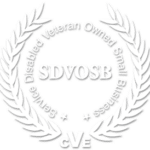In today’s rapidly evolving construction industry, the integration of artificial intelligence (AI) is not merely a futuristic concept but a present reality. However, harnessing the full potential of AI, particularly in generative platforms, requires more than just feeding it with data. The key lies in crafting precise and targeted prompts to guide the AI towards generating the most relevant and useful information. In this blog, we’ll delve into the art of AI prompt engineering specifically tailored for the commercial and federal construction industry.
Step 1: Utilize the “I am” and “You Are” Framework with AI
The foundation of effective AI prompt engineering lies in establishing clear roles for both the user and the AI. Instead of presenting a broad topic, such as “construction safety best practices,” it’s crucial to provide specific context and objectives. For instance, rather than merely requesting a blog post, one could frame the prompt as follows:
“You are an expert in the creation of social media content. I am seeking maximum engagement on my social media profile regarding construction safety best practices. Please provide a 500-word blog post optimized for engagement.”
By delineating roles and objectives, the AI is equipped with guardrails, ensuring that the generated content aligns closely with the desired outcome.
Step 2: Building off the Conversation with the AI
The dialogue with AI is not a one-way street; it’s a collaborative process where each prompt builds upon the previous exchange. Let’s illustrate this through a hypothetical scenario tailored for the construction industry:
Prompt #1: Initial Question “You are an expert Proposal Writer. I am a project manager and need to respond to the attached RFP. Attached is an RFP with the relevant information required to submit a bid. Can you create an outline and summary of this RFP I can use as a framework for my response?”
In this scenario, the AI is provided with specific roles and objectives, guiding it to generate an outline and summary of the Request for Proposal (RFP).
Prompt #2: Further Refinement “Based on the summary you just provided of this RFP, in bullet points, write several win themes and strategies to position my firm to win this business. Please ask me questions that will better help you write this response if you need to.”
Here, the conversation progresses as the AI is prompted to delve deeper into crafting winning strategies based on the provided RFP summary. The user invites the AI to ask clarifying questions, fostering a more collaborative and insightful exchange.
Prompt #3: Utilize the Information In A Useful Way “With this information in mind, what would be a good outline for an internal kickoff meeting to prepare the team to respond to this RFP effectively?”
In the final prompt, the AI is tasked with translating the gathered insights into actionable steps, such as outlining an internal kickoff meeting agenda. By leveraging AI in this manner, project teams can streamline their response preparation process, ensuring alignment and efficiency.
The effective utilization of AI in the construction industry hinges upon crafting precise and targeted prompts that provide clear roles, objectives, and context. By employing the “I am” and “You Are” framework and fostering a collaborative dialogue with the AI, construction professionals can unlock the full potential of AI platforms, enhancing productivity, and driving better outcomes in both commercial and federal construction projects.



